

Ljubljana
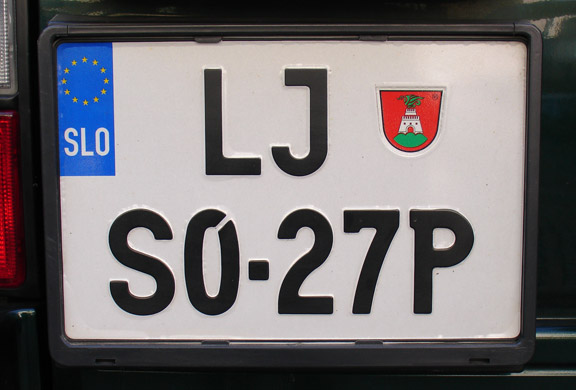
Ljubljana, Slovenia, European Union
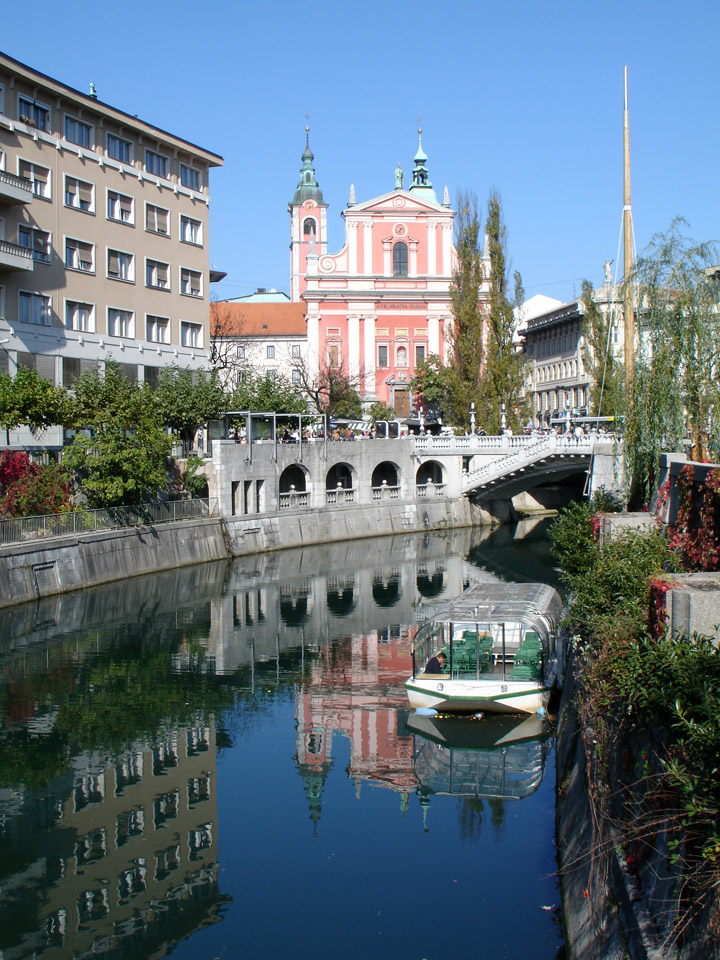
Ljubljana river
With its 280.000 inhabitants, Ljubljana most certainly ranks among the smaller European capitals, but we are convinced that many bigger cities could be envious of all that it has, and many who would not. Ljubljana did not become a capital overnight, it prepared for this for centuries. When it was still "only" a provincial capital of Carniola, it became the capital for all Slovenians in 1918, when the Austro-Hungarian monarchy collapsed. A year later, in 1919, it acquired a university, in 1938 the Slovenian Academy of Sciences and Arts, a radio station as early as 1926 and TV in 1957. It had its own Philharmonic in 1701 and its opera exactly one hundred years ago, not to speak of its theaters. In short, if smallness is its only deficiency, let it be so, as long as it can!
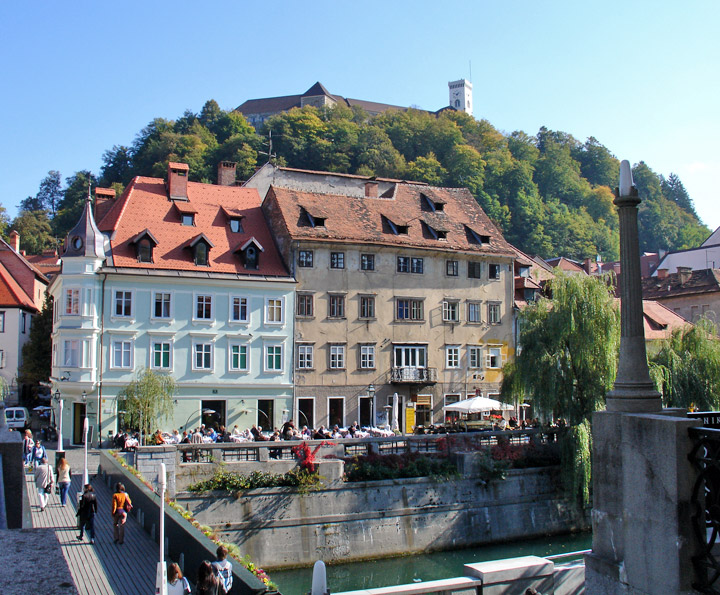
Ljubljana castle on the hill
Even a good thirty years ago the trade mark of Ljubljana was its skyscraper and
castle. The castle, which is about a thousand years old, has been under
reconstruction for quite a few years now, so that apart from seeing its
renovated chapel of St. George, with its coats-of-arms, the pentagonal tower and
wedding Hall, we most strongly recommend a visit to its high tower. The points
is, there is a fantastic view from there, not only of the
city (the rooftops of Old Ljubljana) and its surroundings (like the moody marsh Barje, the green park Tivoli) but also to the Kamnik Alps in the north and the
Julian Alps with Triglav and the Karavanke Alps to the north-west.
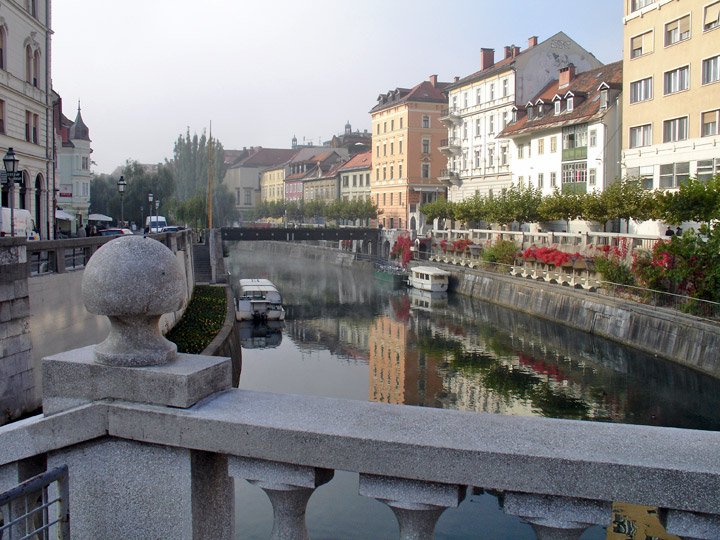
From the castle you descend into the old part of the city, the quarter between
the castle hill and the river Ljubljanica. You won't need more than ten minutes
to discover that Ljubljana is a city of the Baroque and also of the work of the
architect Joze Plecnik. Actually, you would be unable to cross over the banks of
the Ljubljana river without him, as he had something to do with the Sustarski
most (Cobblers' bridge), with Tromostovje (Three Bridges) and in the regulation
of the Ljubljanica river itself, as well as at the market, and many other
things, too. Among the Baroque monuments we should not only mention the churches
(the cathedral, Franciscan, St. James's, the Holy Trinity, the theological
seminary) but also the masterpieces of the Venetian sculptor Francesco Robba,
the fountain of Carniolian rivers (1751) placed in the centre of Mestni Trg, in
front of the Town Hall built in the Renaissance.
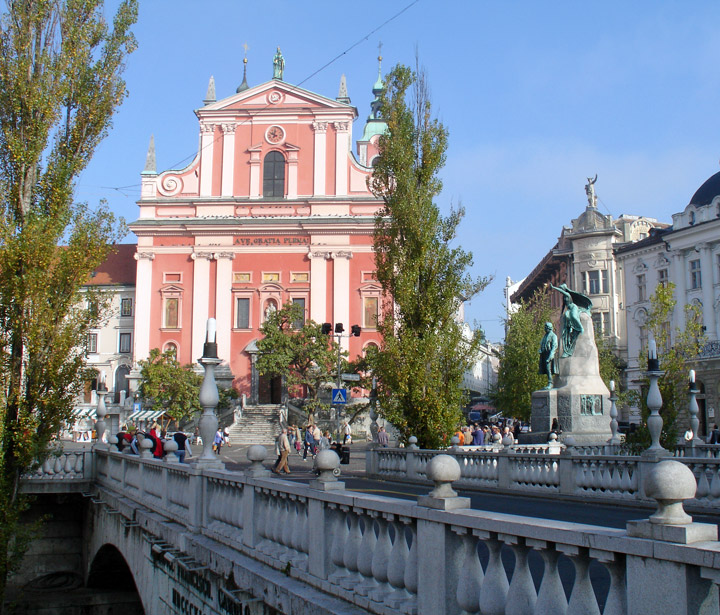
church at the three bridges
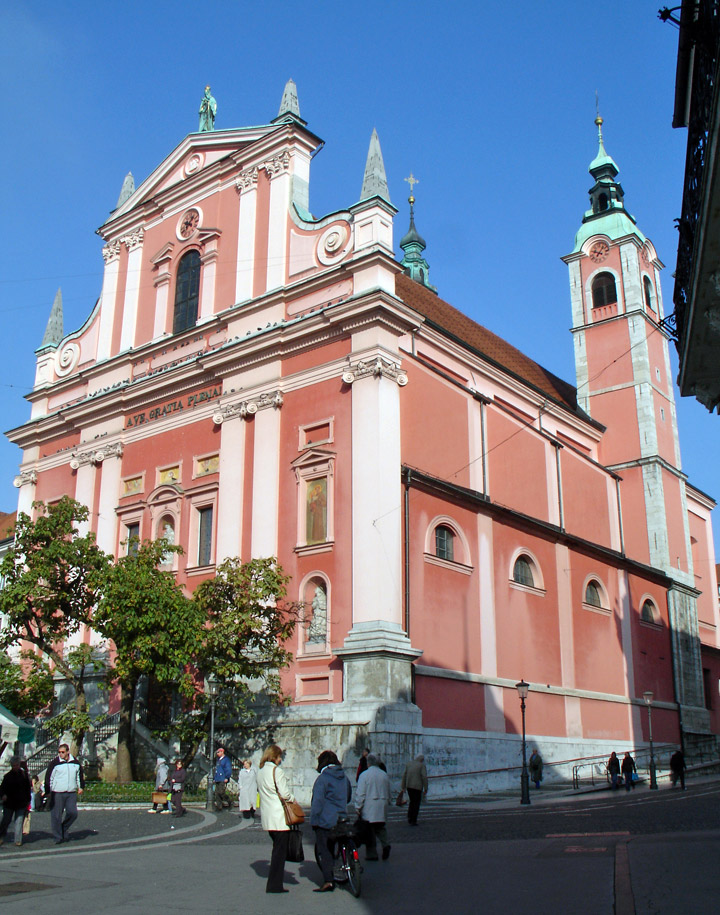
Franciscan Church of the Annunciation
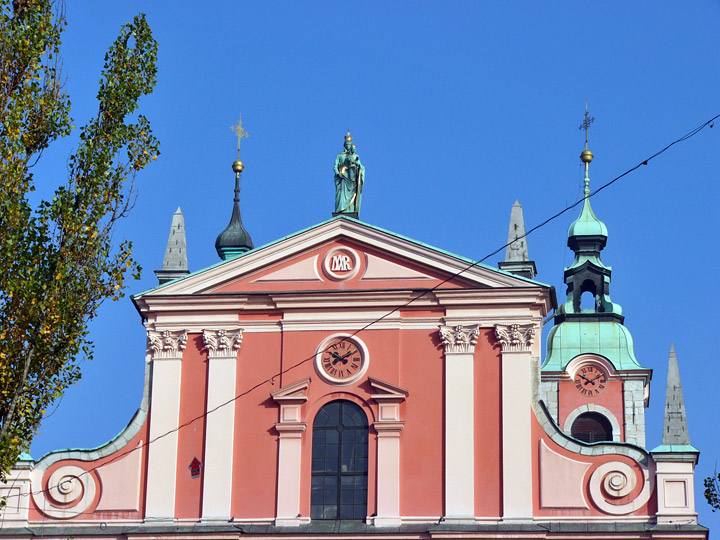
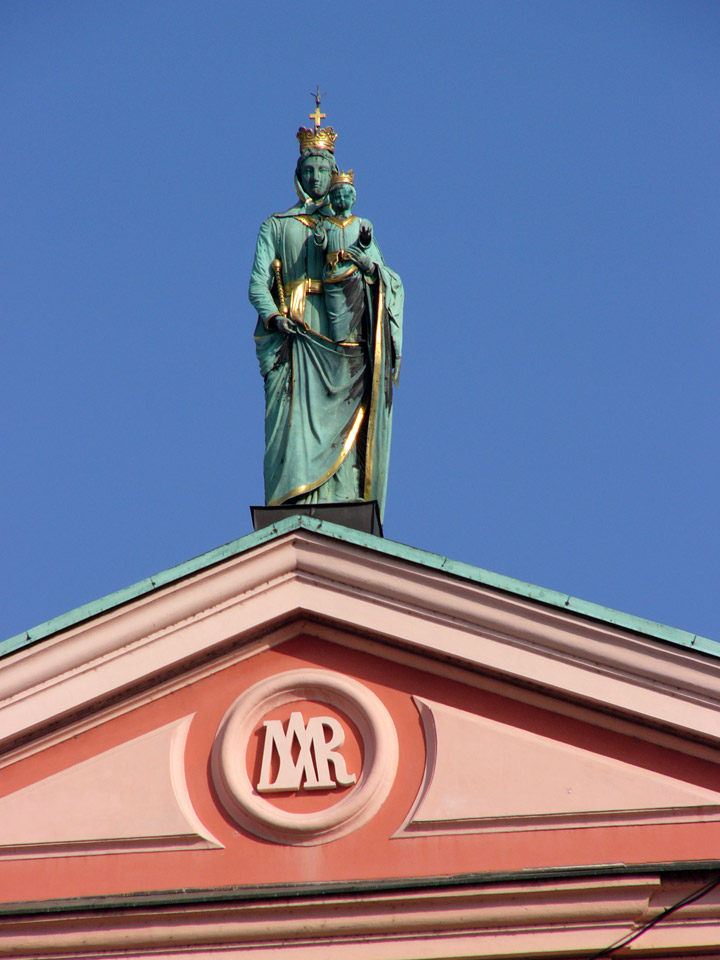
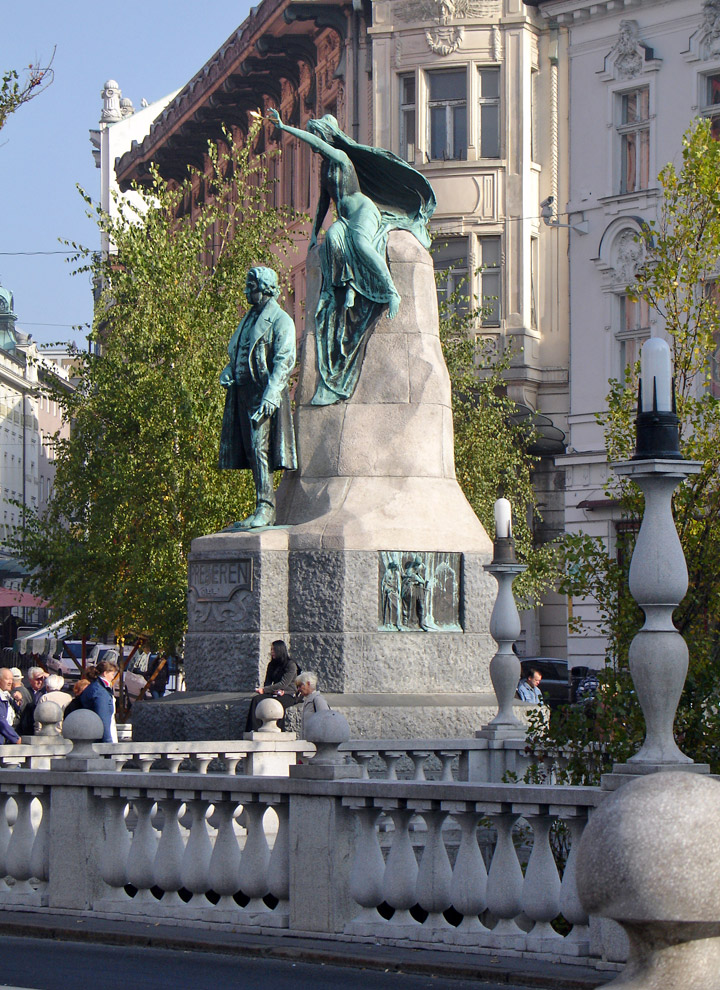
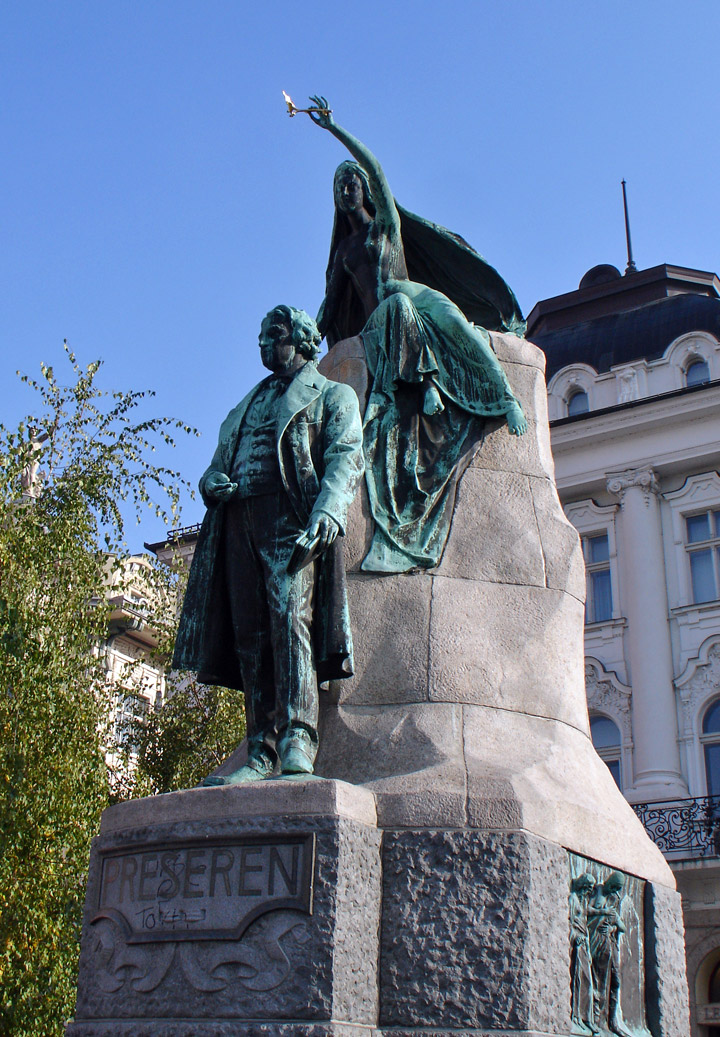
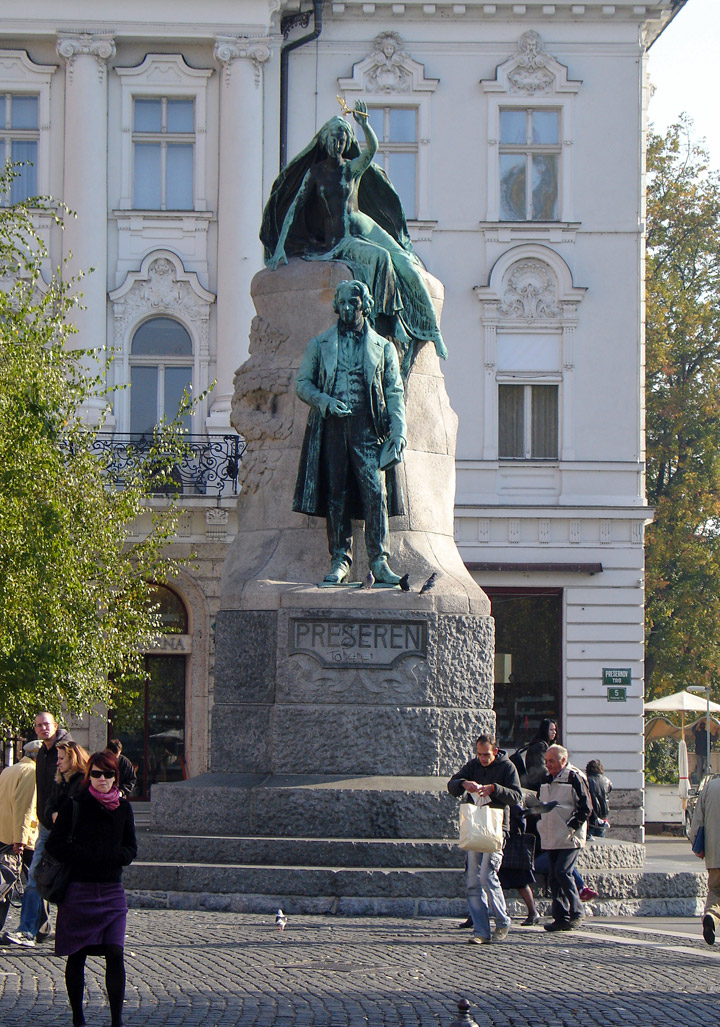
Monument to Slovenia's greatest Poet
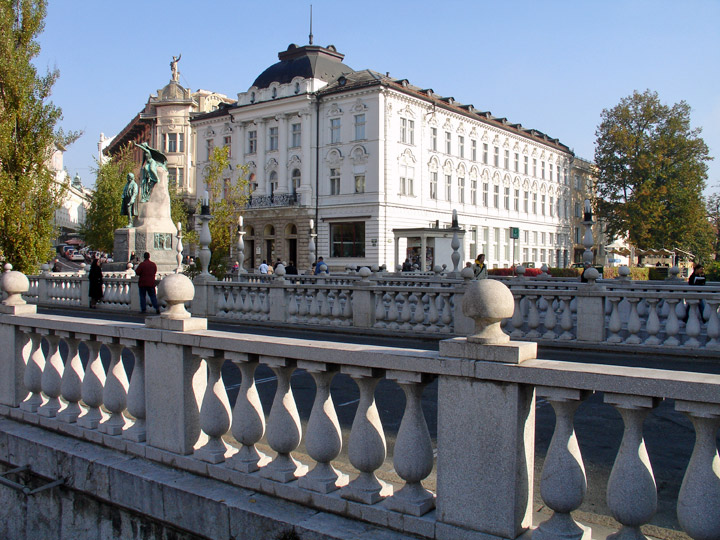
three bridges
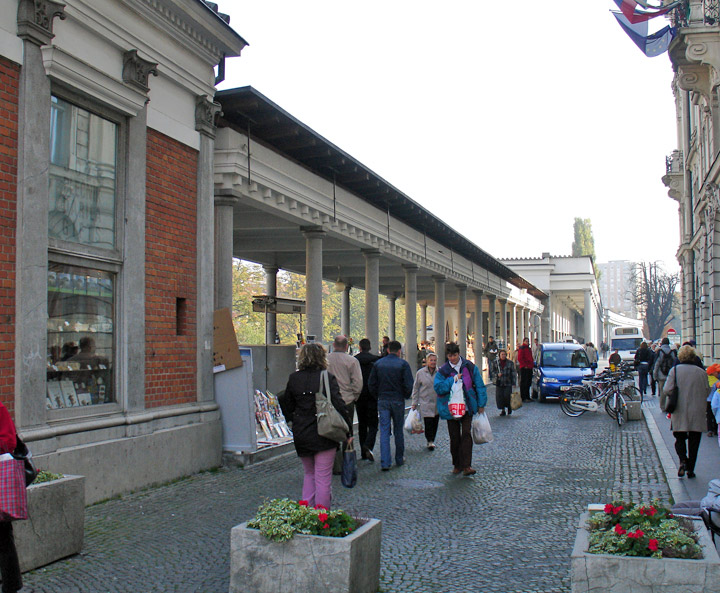
Market Colonnade

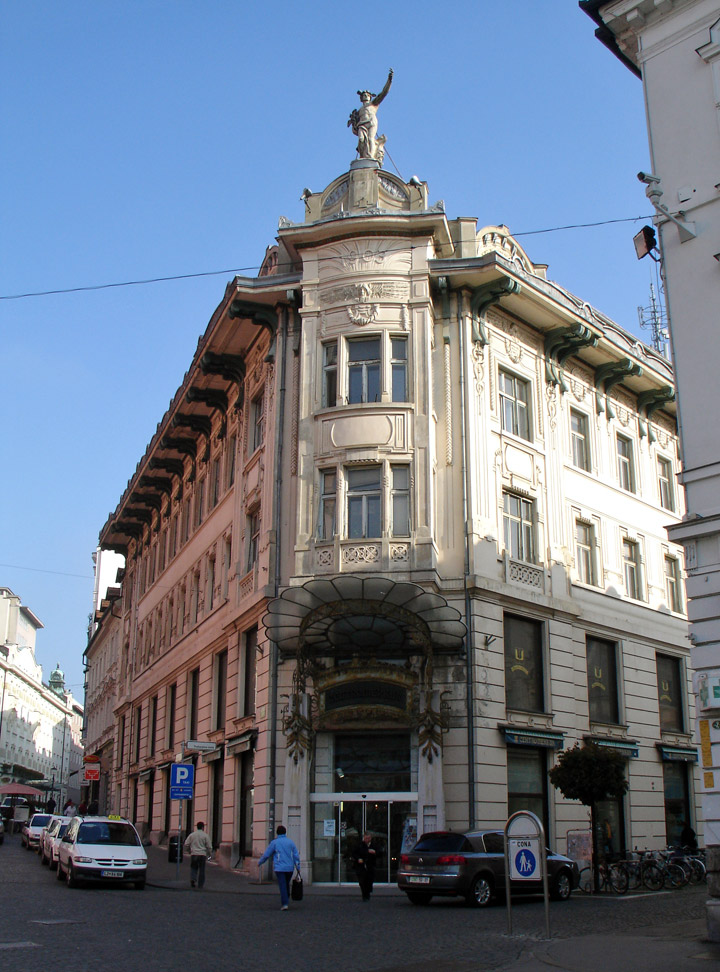

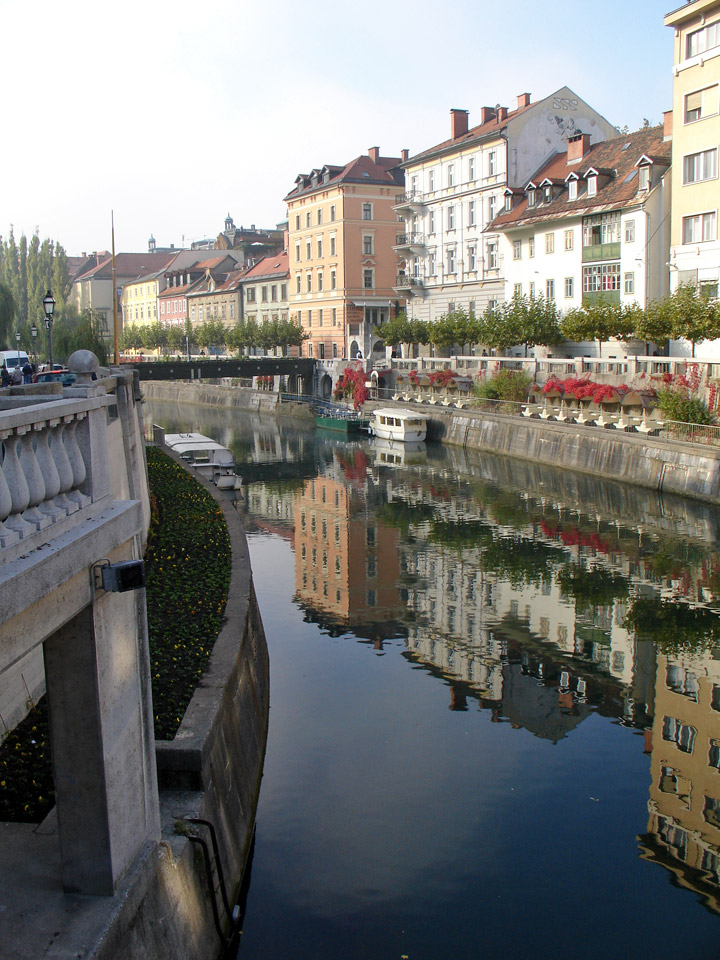
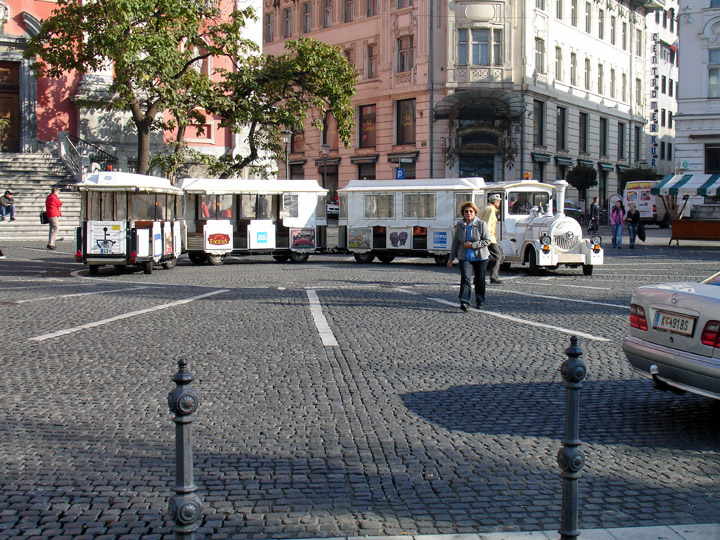
tourist train to provide town tours
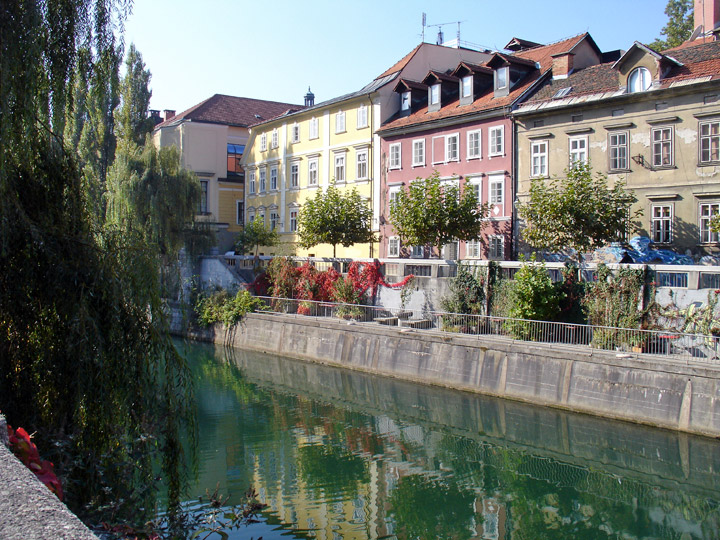
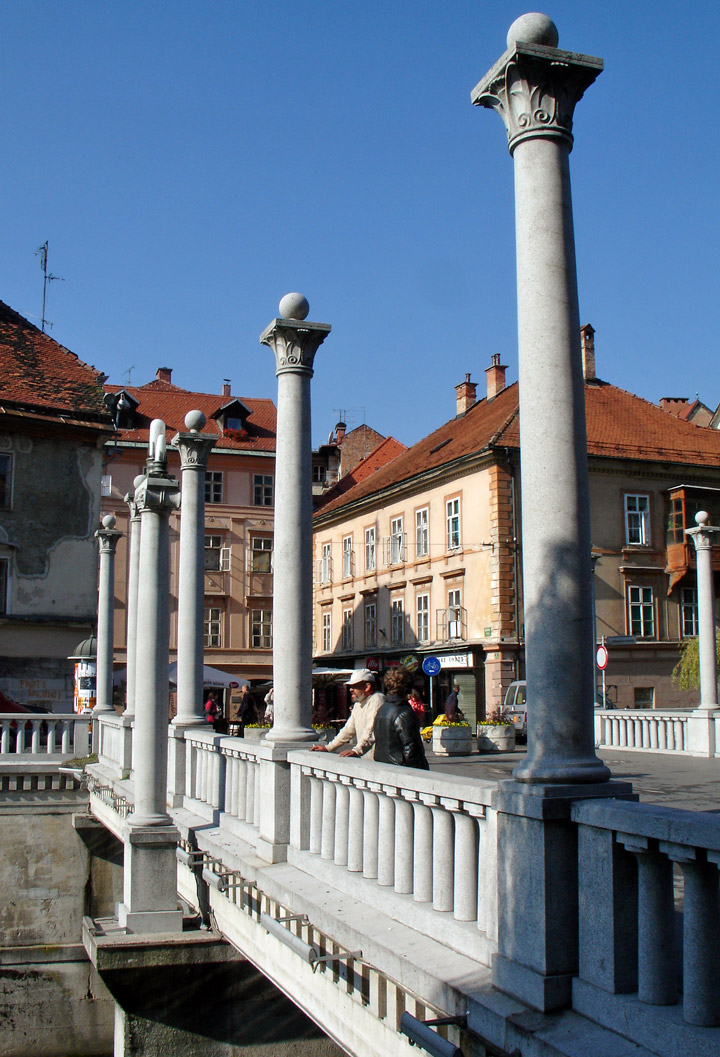
Shoemaker's Bridge
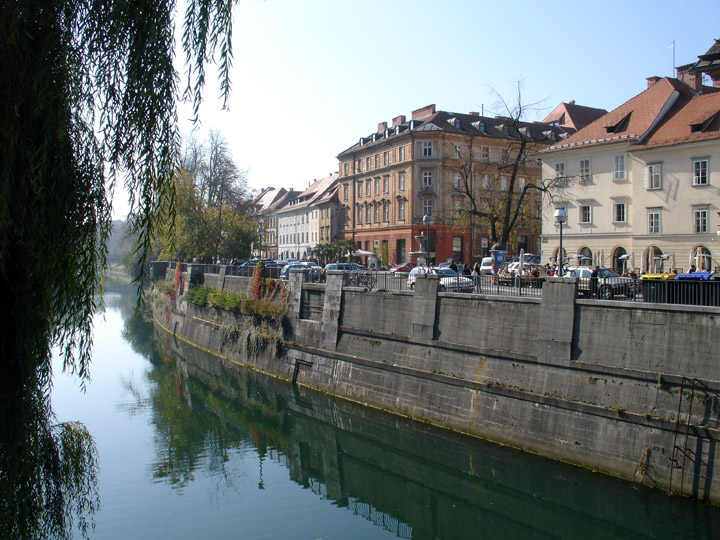
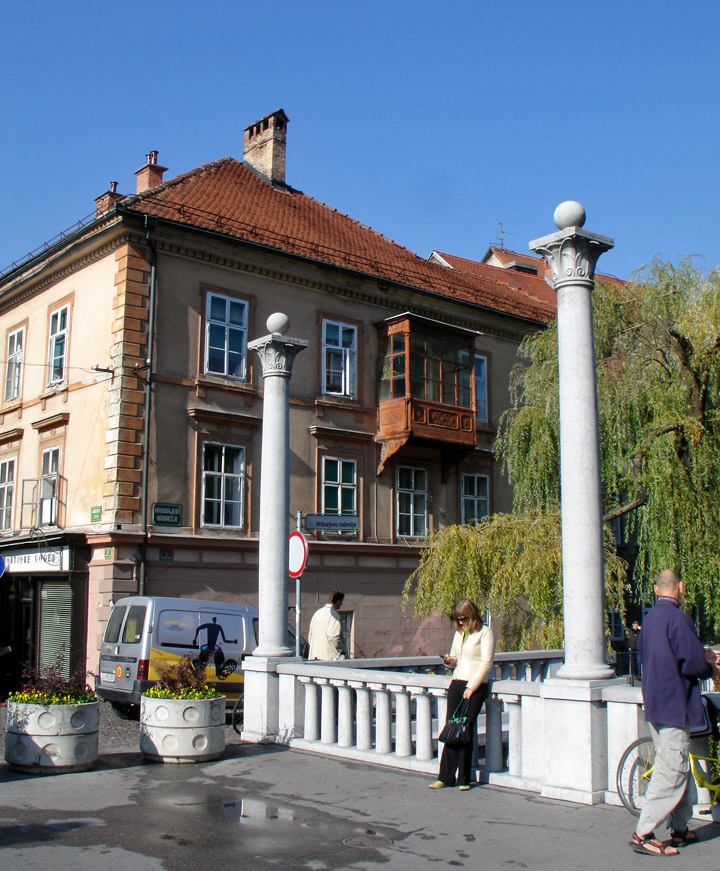
on the Shoemaker's Bridge
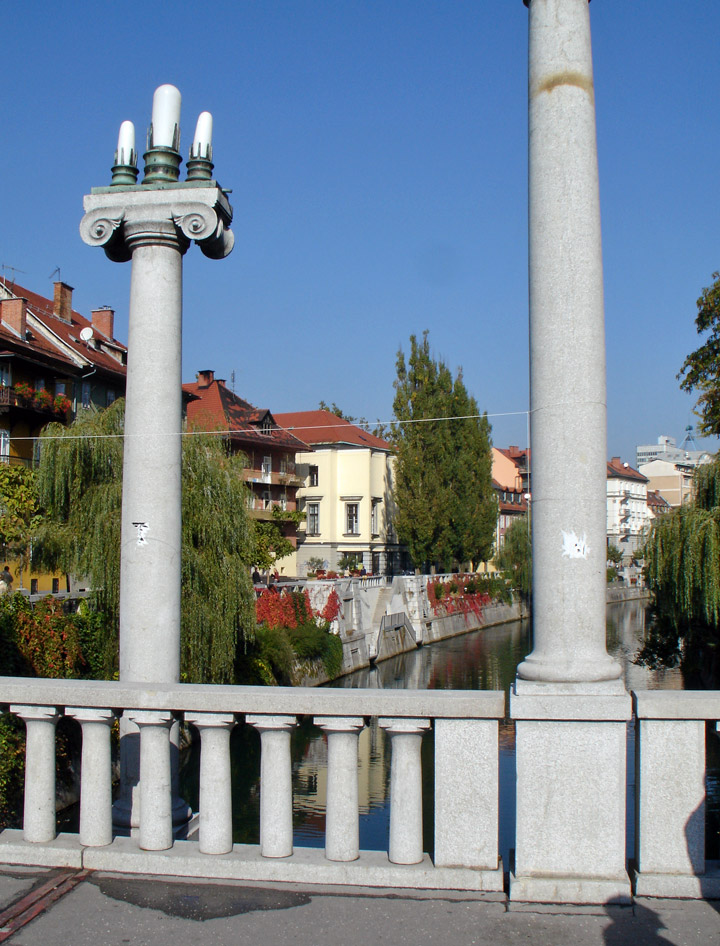
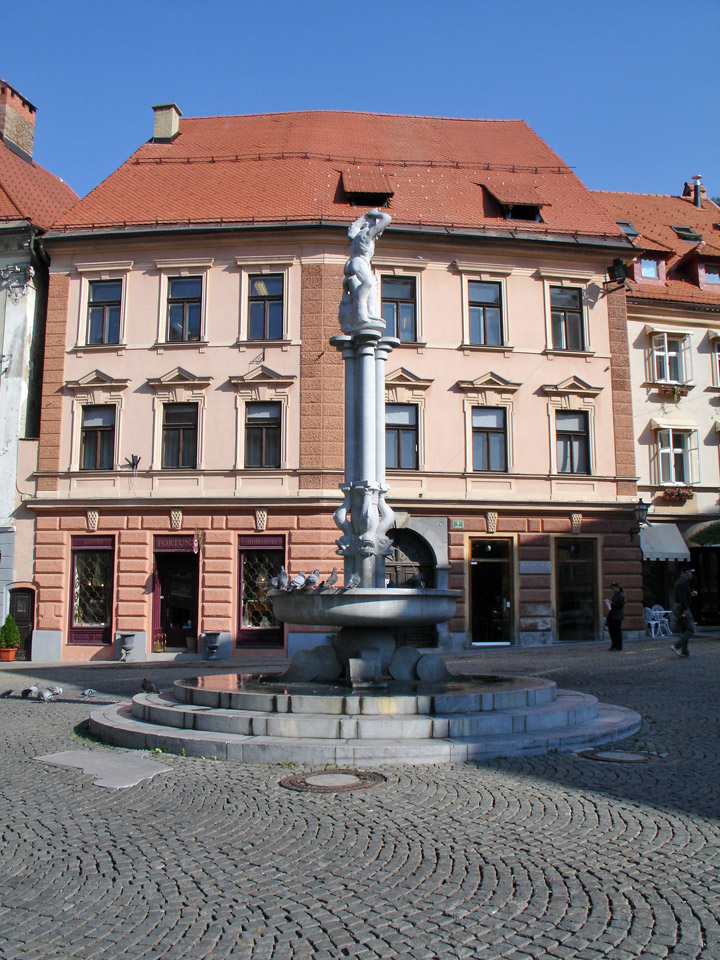
Fountain of the three Carniolan Rivers in Old Town

gate in the former town wall

homes built into the former town wall
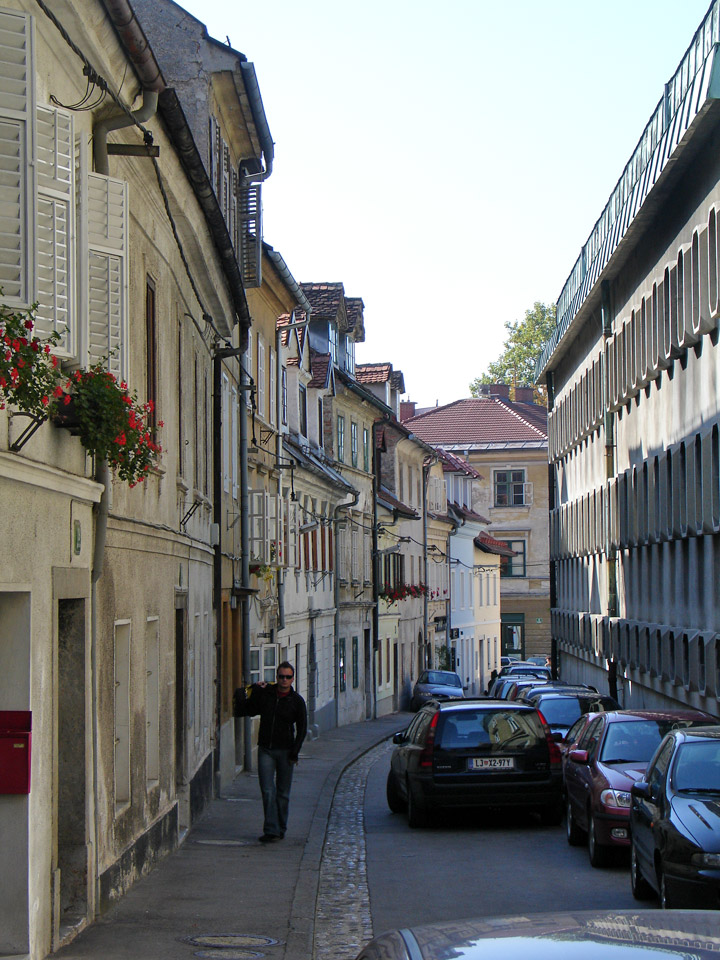
old homes along the wall

St. James church (1615)
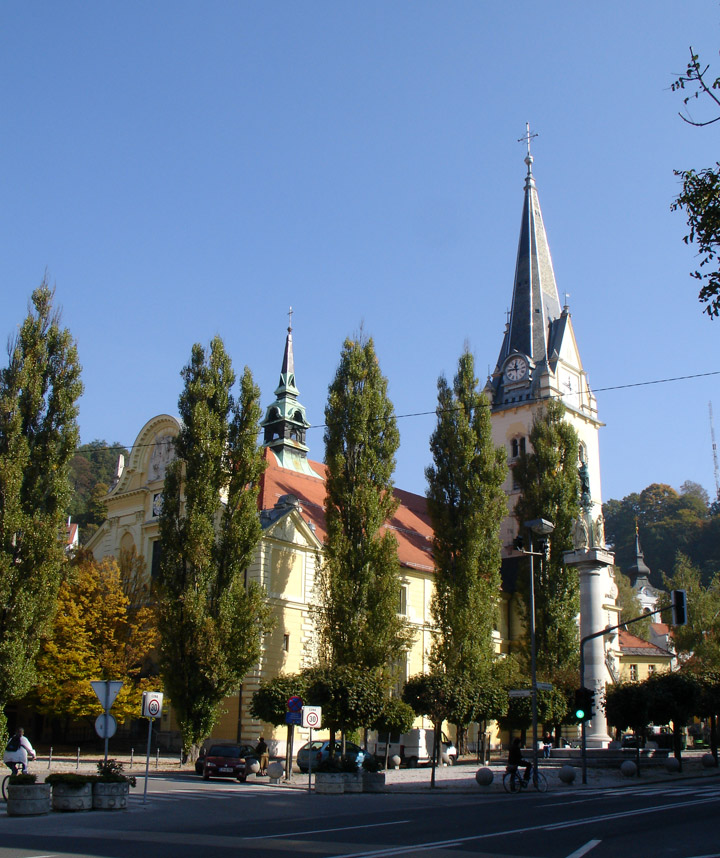
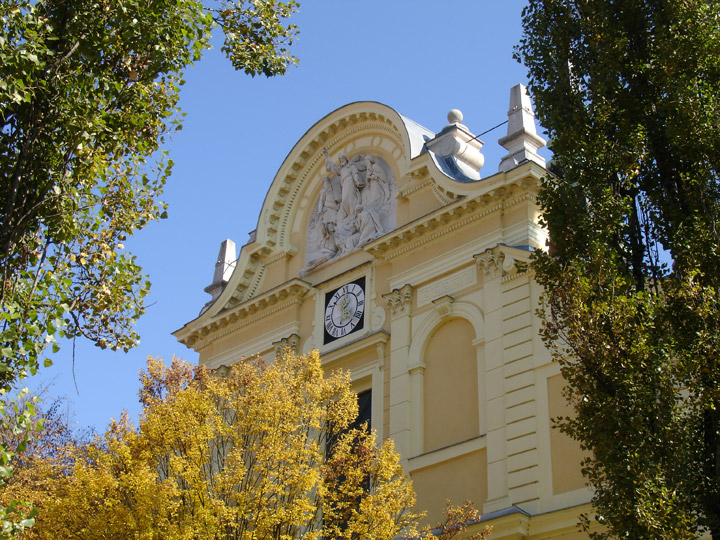
first Jesuit church in Slovenia

plaque on the Gruber Palace (1773-1781)
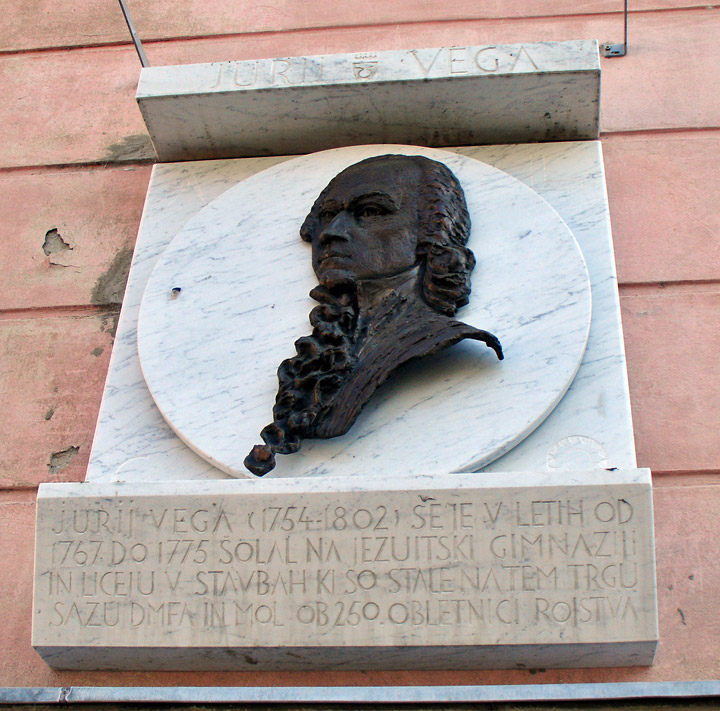
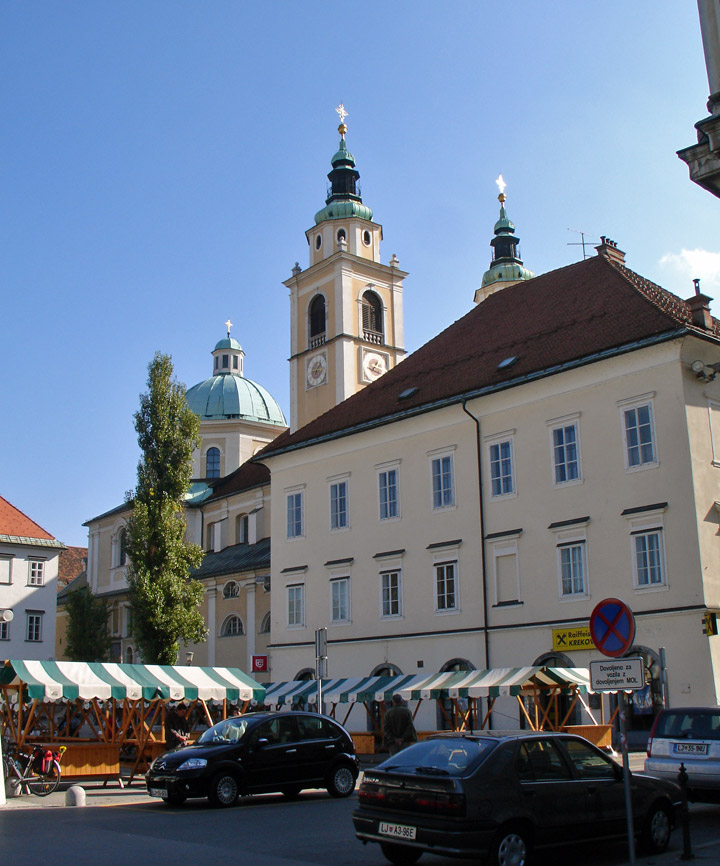
towers of the cathedral

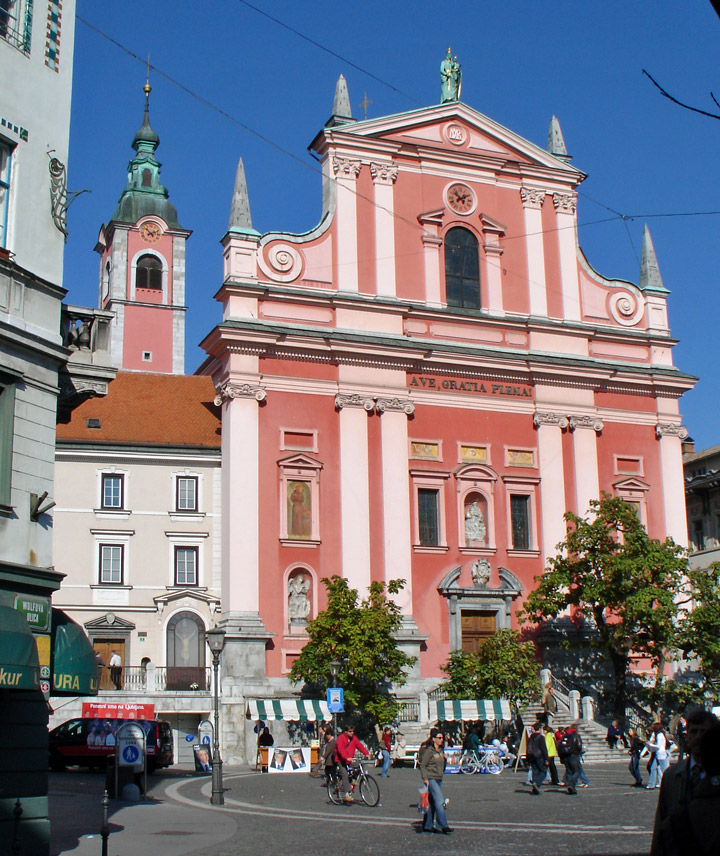
Church of the Annunciation

on the Ljubljana river